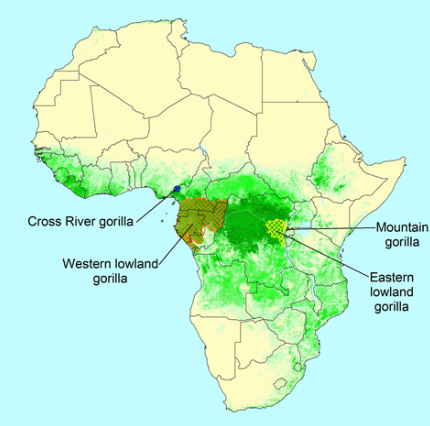Gorilla Migration Patterns Explained
Understanding the migration patterns of gorillas is vital for conservation efforts and species preservation. These magnificent creatures play a crucial role in their ecosystems, and their movements can offer insights into their health and habitat needs. In this article, we will explore the factors influencing gorilla migration patterns and what these movements mean for their survival and conservation.
The Influence of Habitat on Migration
Gorillas primarily inhabit dense forests and mountainous regions, where they rely on specific types of vegetation for food. These habitats significantly affect their migration patterns. During different seasons, gorillas may move to areas with abundant food sources, leading to seasonal migrations. For instance, they often shift their range in response to the availability of fruit and leaves, which can fluctuate based on the time of year and local climate conditions. By tracking these movements, researchers can better understand how habitat changes impact gorilla populations and develop strategies to protect them.
Social Structure and Group Dynamics
Gorillas live in family groups called troops, which are led by a dominant silverback male. The social dynamics within these groups can greatly influence migration patterns. Silverbacks make decisions about where to move based on the safety and well-being of their troop, often seeking out areas that provide security from predators and other threats. Furthermore, the interactions between different troops can affect migration, as competition for resources may lead to displacement or adjustments in movement patterns. Understanding these social structures is essential for learning how to protect these incredible animals in the wild.
Human Impact on Migration Patterns
Human activity plays a significant role in shaping gorilla migration patterns. Deforestation, poaching, and habitat fragmentation can disrupt their natural movements and lead to increased stress within gorilla populations. As humans encroach on their territories, gorillas are forced to adapt, often moving to less ideal habitats that may not provide adequate food or safety. Conservation organizations are working diligently to mitigate these impacts by promoting sustainable practices and protecting critical habitats. By raising awareness about the challenges gorillas face, we can inspire action to ensure their survival.
In conclusion, understanding gorilla migration patterns is essential for their conservation and management. By examining how habitat, social structures, and human impact influence their movements, we can better advocate for these incredible beings. Interested in learning more? Join conservation efforts, support wildlife organizations, and help shed light on the crucial need for gorilla protection. Together, we can make a difference!

